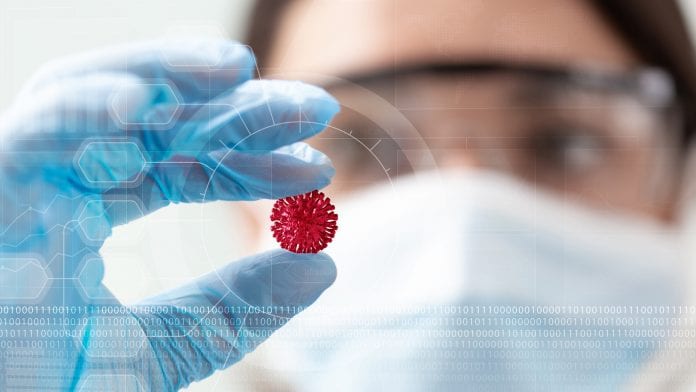
The European Centre for Disease Prevention and Control (ECDC), an agency of the European Union, has warned that the spread of COVID-19 from minks to humans could potentially lessen the effectiveness of a vaccine for the virus.
Since April, human-to-mink and mink-to-human transmission of the COVID-19 virus has been occurring, and on 5 November 2020, 214 cases of COVID-19 infection in humans related to mink were confirmed in Denmark, 12 of which had a unique variant of the virus. The ECDC has completed a rapid risk assessment of the transmission, warning of its potential ability to lessen the effectiveness of a COVID-19 vaccine, and that current vaccine candidates may need to be updated.
The report recommends that a One Health approach is vital in order to detect the virus in mink farms and limit the spread of the infection and that the ECDC will ‘continue to support SARS-CoV-2 sequencing for human cases at the request of the Member States’.
The report states: ‘If a mutation of concern is detected, this should immediately be reported to national and European authorities (through the Early Warning and Response System – EWRS) and the international community. Sharing sequences regularly in open databases and early communication of epidemiological and microbiological investigation results is encouraged in order to improve knowledge of SARS-CoV-2 variants.’
The problem with vaccines
The risk assessment highlights that, of the number of mink-related COVID-19 variants that have been analysed so far, one cluster – Cluster 5 – has raised ‘specific concern due to its effect on antigenicity’ and says the cluster requires a specific assessment as it demonstrated reduced sensitivity to neutralising antibodies from COVID-19 patients earlier this year.
It highlights that T-cell mediated immune responses to this variant have not yet been investigated, and that further investigations are ongoing to understand the extent of the implications, but that this evolution of the virus could have an impact on the effectiveness of developed vaccine candidates, which could potentially see the need for them to be updated.
The report states: ‘It should be noted that these findings are preliminary and need to be confirmed before any conclusions can be drawn. Further investigations are needed to assess the impact on i) the risk of reinfection, ii) reduced vaccine efficacy or iii) reduced benefit from treatment with plasma from convalescent patients or with monoclonal antibodies.’
It also highlights that the Cluster 5 variant does not affect the sensitivities of diagnostic RT-PCR assays, as these assays do not target the virus spike protein, but that all the variants could potentially affect the sensitivities of antigen and antibody detection assays, ‘including rapid antigen tests (RATs), although any effect will probably be small.’
Infection prevention and control
The assessment raises concerns that any workers in mink farms that are not fully compliant with hygiene measures could potentially introduce mink-related COVID-19 variants into the wider human population, which could lead to cross-border spread, recommending that increased surveillance between animal and public health bodies, as well as testing and sequencing of the variants could help limit the spread and identify newly emerging variants of the virus.
The report states: ‘It is advised to limit the number of people in contact with mink and mink farms, including the avoidance of unnecessary visits, as a measure for reducing the risk of SARS-CoV-2 being introduced into the mink population and re-introduced from the mink population into the human population.’
It goes on to recommend that additional equipment, disinfectants, washing facilities, and appropriate training and PPE should be provided to all those working in mink farms, and that ‘National authorities should consider culling mink from infected farms and destroying raw pelts in accordance with appropriate biosecurity measures. A ban on the movement of live mink and raw pelts processed in 2020 within the EU and worldwide should also be considered for as long as SARS-CoV-2 exposure from humans to mink is occurring.’
One Health response
Human and animal health is intimately related, and a ‘One Health’ approach to tackling the problem is recommended by the ECDC. This would take the form of increased co-ordination between agricultural, animal, and human health sectors, along with joint outbreak investigation protocols.
Increased public awareness of mink-related COVID-19 infection prevention and control strategies is vital, particularly in groups such as mink producers and mink farm workers, vets, and partners in the fur industry.
The ECDC highlights in the assessment that, based on the information available, currently the risks to human health from the mink-related COVID-19 are low for the general population and those in vulnerable populations, but moderate-to-high for medically vulnerable people living in mink affected areas.
The agency states: ‘If the concerns raised in relation to immunity, reinfection, vaccination and treatment are confirmed, the risk assessment will be immediately reviewed to re-assess the overall level of risk to human health and the potential implications for COVID-19 diagnosis, treatment and vaccine development. This also applies to any further mink-related variants with mutations in the S protein that may arise and spread in the EU/EEA and the UK.’
By Stephanie Price
























